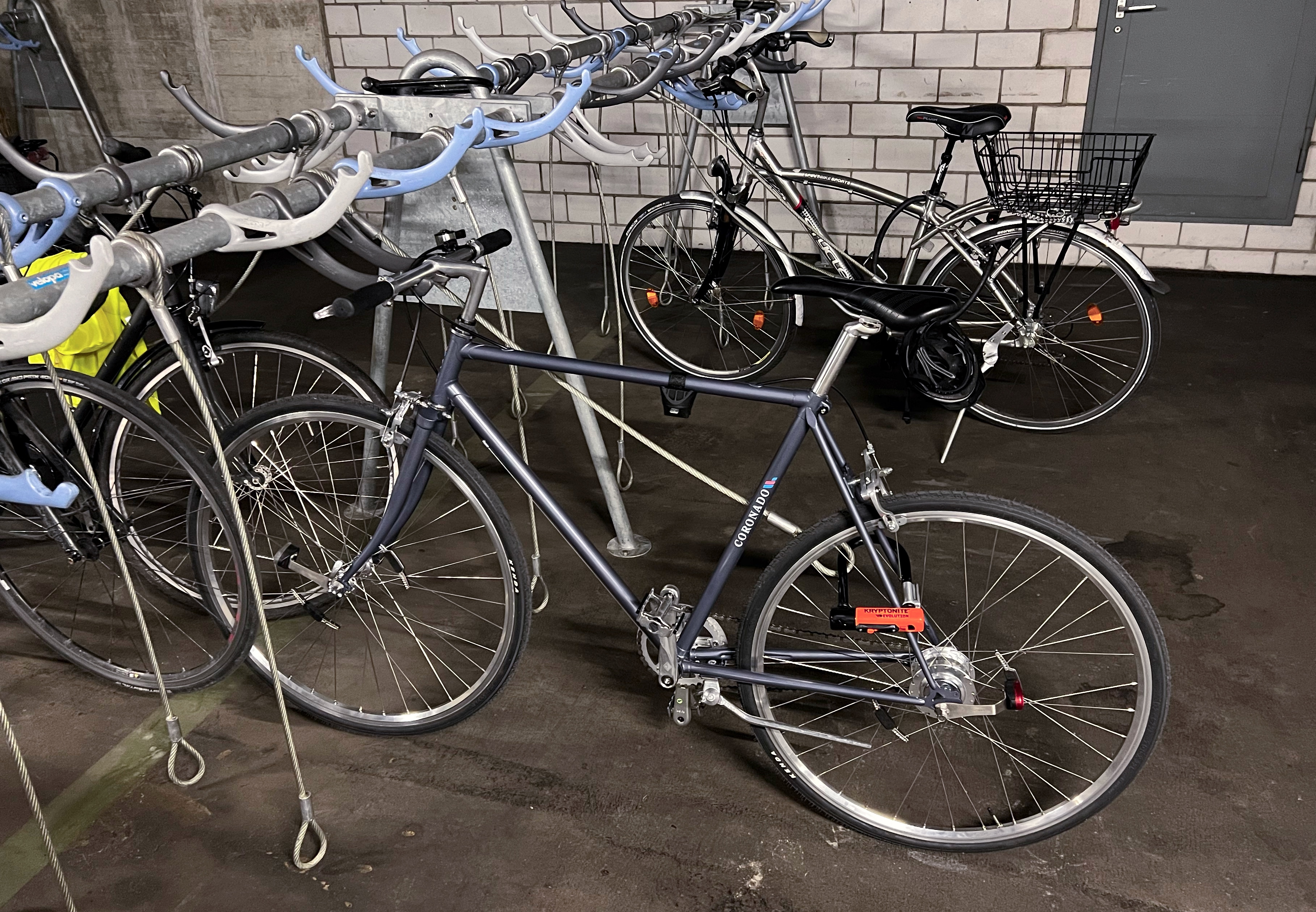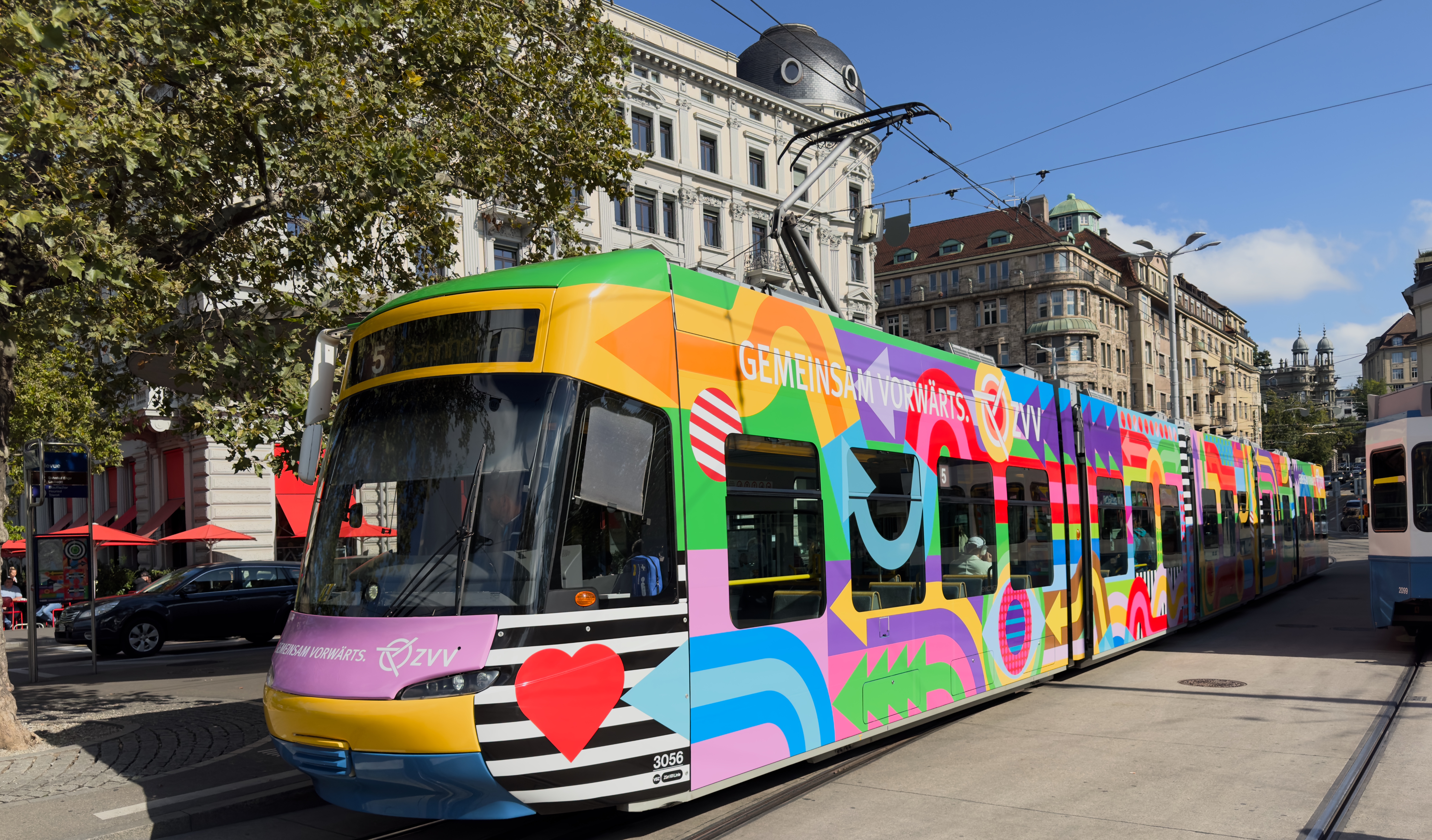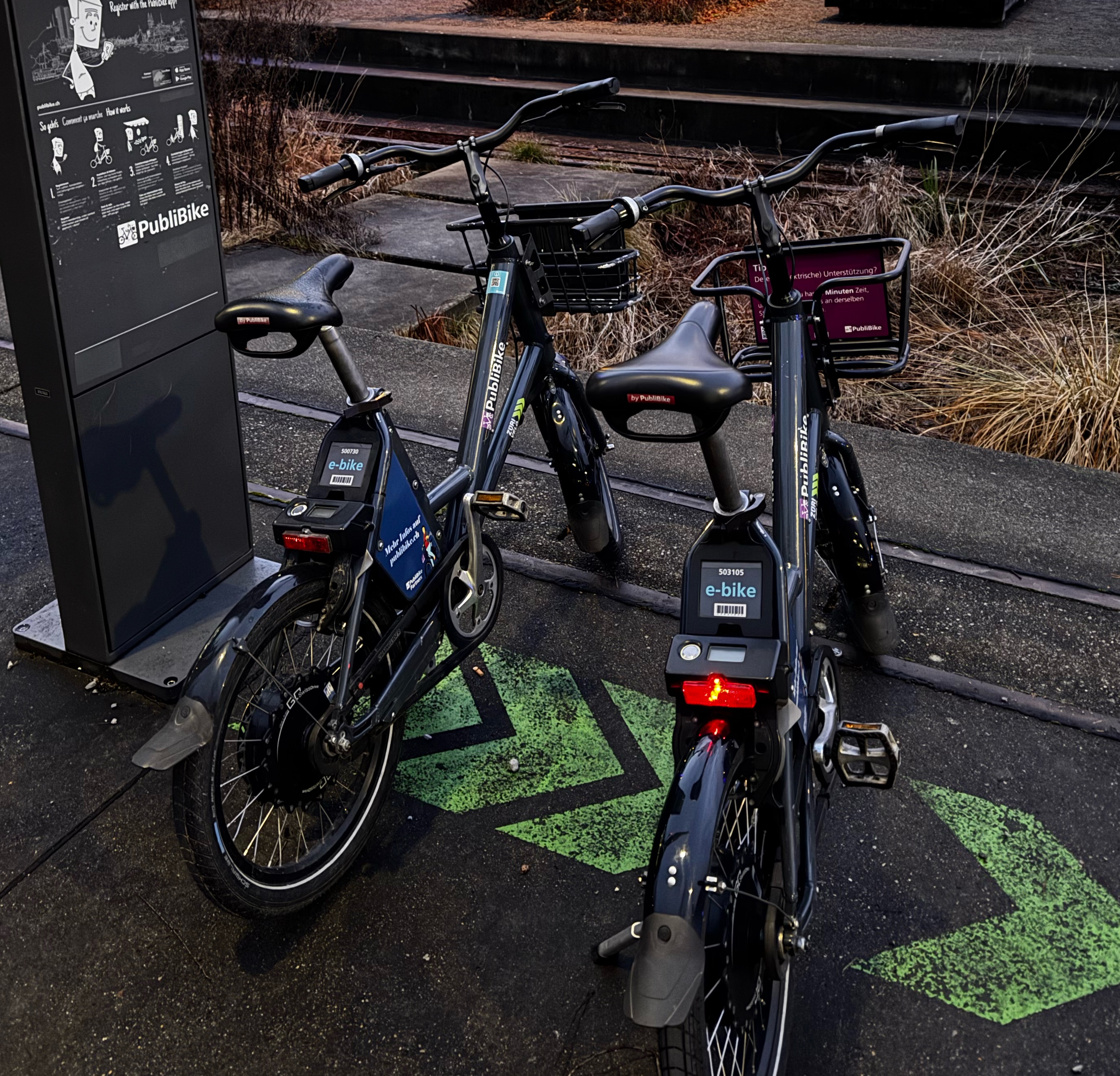We are moving around more than ever these days. Whether it’s commuting to work, navigating city streets, visiting friends scattered across the country (or even Europe), or embarking on holiday adventures to discover new places—mobility has become central to our modern lives.
Close-by
For short distances, like popping to the shops or heading to work, cycling remains my go-to option. My trusty two-wheeler gets me where I need to go with minimal fuss.

My bike, locked up at work
Of course, bikes aren’t without their challenges. Those Zurich hills can be quite the workout1, and flexibility becomes an issue when plans change after work. “Just meeting for a quick drink” suddenly becomes a logistical puzzle when your bike is involved.
Fortunately, Zurich’s public transport network is exceptional. Buses and trams offer comprehensive coverage throughout the city, though you might not always get a direct connection to your destination.

A very colourful tram in Zurich
Modern solutions have also expanded our options. Bike-sharing systems and e-scooters have become ubiquitous, offering excellent last-mile solutions or complementing public transport for those awkward connections.

Publibike, the local bike sharing system
Further Away
When venturing beyond city limits, Switzerland’s train system truly shines. The Swiss Federal Railways (SBB) network is renowned for its punctuality and coverage2, connecting even the most remote valleys with remarkable efficiency.
For locations not served by trains, an extensive bus network fills the gaps. The integrated timetable means you’ll rarely wait more than a few minutes for your connection.
Late-night visits to friends can sometimes present challenges, but even then, the night network of trains and buses makes getting home vastly preferable to driving (especially after that second glass of wine).
Travelling
For longer journeys, trains remain my preferred mode of transport. The environmental benefits are substantial3, and the experience is incomparably more pleasant than being crammed into an aeroplane seat.
Sometimes flights are unavoidable, particularly for crossing oceans or reaching remote destinations. But whenever possible, I opt for trains—and increasingly, sleeper services are making overnight journeys both practical and comfortable.
What if a Car is Really Needed
Occasionally, a car becomes necessary—perhaps when moving furniture or visiting that one relative who lives in the middle of nowhere. Rather than owning a vehicle that sits idle 95% of the time, car-sharing services like Mobility offer the perfect solution.
With a Mobility station just minutes from my home, I can access vehicles of various sizes whenever needed. While it can get expensive for very long journeys, the overall cost remains significantly lower than car ownership when you factor in insurance, parking, maintenance, and depreciation4.
According to my smartwatch, my daily commute burns approximately 150 calories. And after a long day of working, this is hard. ↩︎
Swiss trains boast an on-time rate of over 90%, making them among the most reliable in Europe. Source: SBB Facts and Figures ↩︎
A train journey from Zurich to Paris generates approximately 4 kg of CO2 per passenger, compared to 80 kg for the same journey by plane. That’s 20 times less! See this carbon calculator for more comparisons. ↩︎
The average cost of car ownership in Switzerland is around CHF 10'000 per year when all expenses are considered. Unless you’re driving more than 10'000 km annually, car-sharing typically works out cheaper. ↩︎